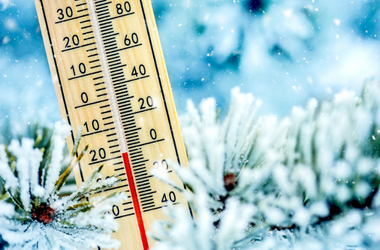Blog
 No matter how many times we go through it, extreme weather during the winter months is always a challenge. It affects millions of people each year, and the combination of cold air and biting winds can be incredibly dangerous.
No matter how many times we go through it, extreme weather during the winter months is always a challenge. It affects millions of people each year, and the combination of cold air and biting winds can be incredibly dangerous.
Frostbite and Hypothermia
If you have to be outside for any length of time, try to cover every part of your body. Frostbite occurs when you're exposed to intensely cold weather, and your body shuts off blood circulation to your extremities to protect your vital organs. That means your fingers, toes, ears, and nose are especially at risk, although any exposed skin is in danger of frostbite. Dress in layers. Mittens, more snug at the wrist, are better than gloves, and make sure your head is covered. Try to stay dry and seek shelter from the wind as much as possible.
While you're outside, do your best to stay active to avoid losing heat faster than your body can produce it. Hypothermia, or abnormally low body temperature, can impact how well your heart, nervous system, and other organs function. Shivering is likely the first symptom you'll notice, but others include weak pulse, drowsiness, shallow breathing, and slurred speech. Passive rewarming—using blankets or warm drinks to get the body back to its normal temperature—is the typical treatment for mild cases.
Don't forget to check on your relatives and neighbors, especially if they live alone or are elderly. As you age, your body becomes less able to let you know you're cold, so seniors are particularly vulnerable to hypothermia.
Prepare the House and the Car
The Centers for Disease Control & Prevention (CDC) recommends gathering survival kits for both your home and your vehicle, although you shouldn't travel if it isn't absolutely necessary. Check to make sure you have:
- Blankets
- Water stored in clean containers
- First aid kit
- Food that doesn't need to be cooked or refrigerated, like energy bars
- Water, food, and other necessities for your pet(s)
- Cell phone, and a way to charge it
- Flashlight and exra batteries
- Other special needs items—medications, batteries for hearing aids, supplies for infants, etc.
Tips for Pet Safety
Cold weather is just as tough for animals as it is for us, so please keep your pets inside. If that isn't possible, make sure they have a dry, draft-free place that's big enough for them to rest in, but not much larger, and cover the floor with straw. Turn the enclosure away from the wind and place a waterproof covering over the entrance. Make sure they can access food and water at all times.
The National Weather Service is a great resource for the latest information on weather in your area. Visit this page for additional tips on how to prepare for extreme cold.

